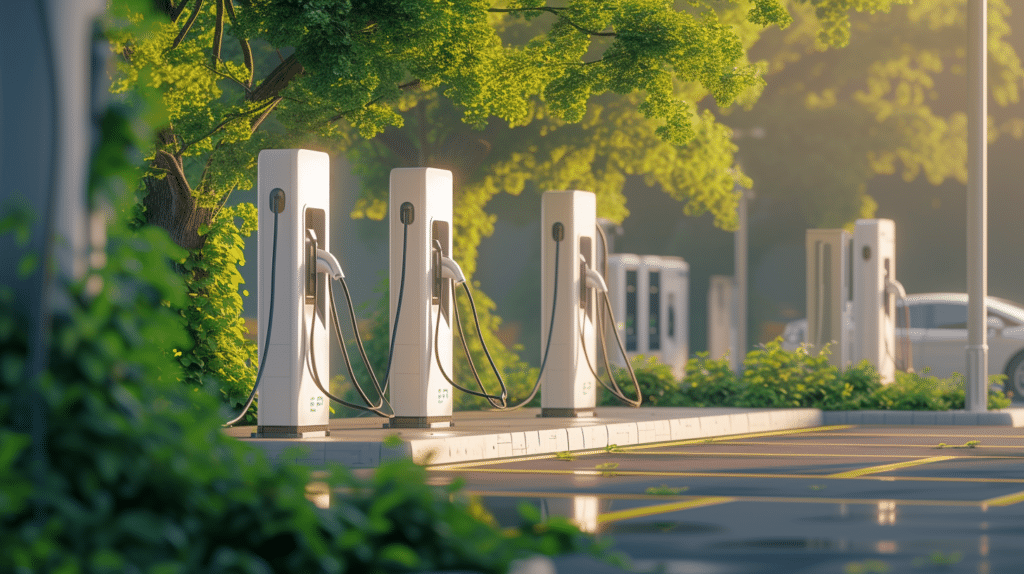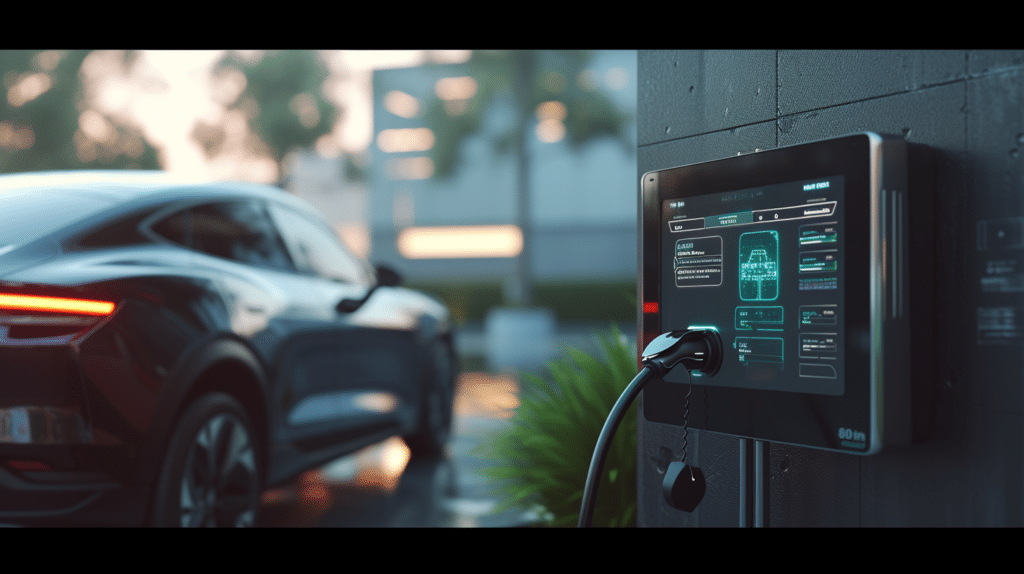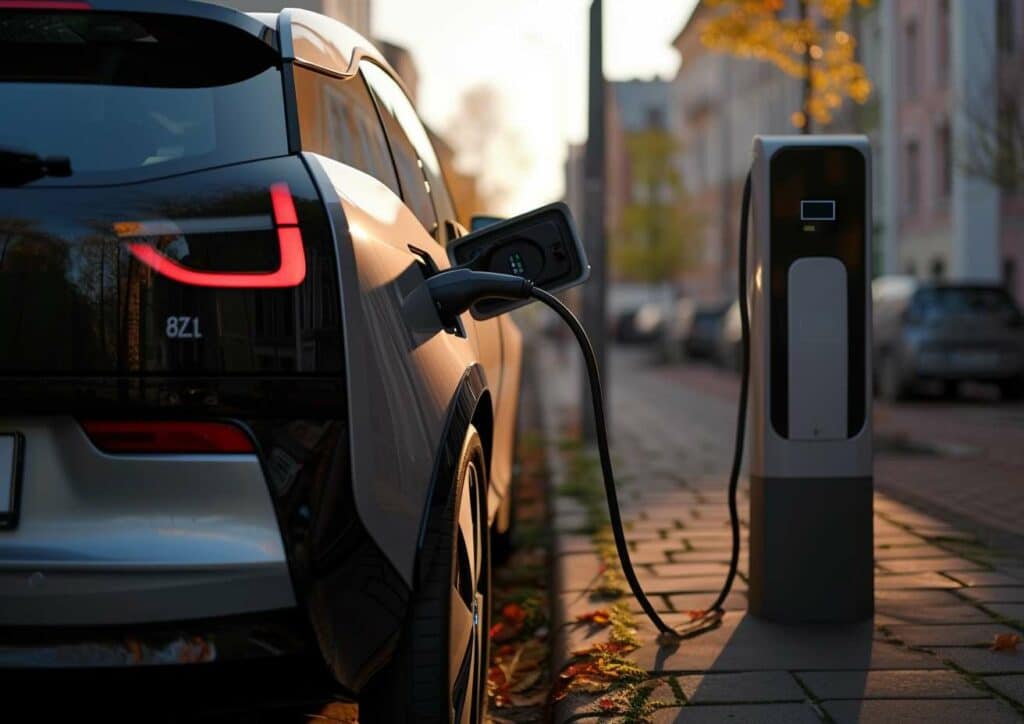Electric vehicle (EV) charging stations, often referred to simply as charging stations, play a pivotal role in the widespread adoption of electric vehicles by providing a vital infrastructure for recharging EV batteries. These stations serve as the critical link between the electric grid and the growing population of EVs, allowing car owners to extend their driving range with ease.
In this comprehensive exploration, we delve into the intricacies of electric vehicle charging stations, their working mechanisms, the array of charging options, various payment models, the rationale behind offering free charging, the challenges for the EV charging infrastructure, and help answer the question: Are EV charging stations free?
Understanding EV Charging Stations
EV charging stations serve as a crucial enabler for EV adoption. They serve as physical interfaces where EV owners can conveniently plug in their vehicles to access power from the grid, ensuring that their cars are always ready to hit the road. These stations, however, come in various types, each offering distinct levels of charging speed and power output.
Variety of Charging Station Levels
Charging stations cater to various settings, from residential areas to public spaces, such as parking lots and highways. These diverse settings necessitate varying charging speeds and power outputs to meet the unique requirements of EV owners.
- Level 1 Charging: Also known as trickle charging, Level 1 charging is the slowest method, offering a charging rate of 2-5 miles per hour. A Level 1 EV charger typically employs a standard 120-volt household outlet. Although it’s best suited for overnight or extended stay charging at home, it may not be practical for long road trips due to its slow pace. Level 1 charging is most suitable for smaller or lower-capacity batteries or plug-in hybrid electric vehicles.
- Level 2 Charging: A level 2 charger is a step up in speed, offering a charging rate of about 10-40 miles per hour using a 240-volt electrical service. It finds use in residential, public, and workplace charging locations. A Level 2 EV charger is ideal for those who need faster recharging and is often available in public areas such as hotels, shopping malls, and parking lots. To have Level 2 charging at home, one might need a charging station installation, a service typically provided by a licensed electrician or EV charging company such as WattLogic.
- DC Fast Charging: DC fast charging stands out as the fastest charging method, boasting a typical power output of 50-350 kW. These public charging stations are designed to recharge an electric car’s battery in as little as 20-30 minutes. DC fast charging stations are often found along travel corridors and are ideal for quick recharges during long trips. Despite being the most expensive option, some entities may offer a DC fast charger free to bolster electric vehicle adoption.
Unraveling the Cost of EV Charging

The financial aspect of EV charging is multifaceted, with various payment models available to EV owners.
- Pay-per-use: This model entails paying a fee for each charging session. The cost may vary based on the public charging station, location, and time of day. It’s suitable for occasional users or those seeking flexibility without subscription commitments. Users can make payments via credit cards or mobile payment systems. However, frequent users may find it more expensive in the long run.
- Membership Models: Membership-based charging networks require EV owners to pay a monthly or annual fee to access a network of electric car charging stations. Memberships can include unlimited access, monthly charging time, or energy for an EV driver. Perks may have fee discounts, exclusive access, and priority charging during peak hours. These models can save regular users money compared to pay-per-use, but they require a commitment that may only suit some users.
- Flat-Rate Pricing: In this model, EV owners pay a fixed price for each charging session, regardless of duration or energy consumed. This straightforward approach is popular among users and charging station operators, as it simplifies budgeting and billing. Flat-rate pricing may vary by duration (hourly, daily, or weekly) or consistent across all sessions, contingent on location and power output.
- Free Charging: Some charging stations offer free charging, primarily as a promotional strategy to incentivize EV use. Businesses aiming to attract EV-owning customers may embrace this approach. Governments and non-profit organizations may also offer free charging as part of their carbon reduction efforts or to encourage sustainable transportation. However, free charging may only sometimes be dependable, potentially resulting in longer wait times and operational limitations.
The Motivations Behind Free EV Charging
Several reasons drive the provision of free EV charging at certain stations.
- Promotion and Goodwill: Businesses often use a free EV charging station as a promotional tool to attract EV-owning customers and stand out in a competitive market. This approach fosters goodwill and enhances the brand’s image.
- Environmental Initiatives: Governments and non-profits may offer free charging to reduce carbon emissions and support the shift to sustainable transportation. Free charging serves as an incentive for individuals to adopt EVs, aligning with broader environmental goals.
- Grid Balancing: Electric utilities sometimes provide free charging during off-peak hours to balance grid loads, mitigate peak energy demands, and stabilize electricity prices. This strategic use of EVs can help prevent power outages.
- Cost Recovery and Customer Base Growth: Charging station operators may offer free charging to offset installation and maintenance costs. This approach attracts a more extensive customer base, potentially yielding higher returns over time.
Navigating the Challenges Ahead

While the proliferation of EV charging stations is on the horizon, several roadblocks must be addressed for seamless adoption and sustainability.
- High Maintenance Costs: Ensuring the reliability and safety of charging stations necessitates regular maintenance and servicing. However, these tasks can incur substantial costs. To manage this challenge, charging station operators may offer maintenance contracts, while technology advancements may yield more durable components, reducing repair needs.
- Electricity Costs: The variable cost of electricity can deter some potential EV adopters. Charging station operators often mitigate this challenge by offering pricing plans that incentivize off-peak charging or harnessing renewable energy sources to reduce electricity expenses.
- Limited Electrical Infrastructure: Inadequate grid infrastructure is a significant challenge, especially in areas without the capacity to support new charging stations. Solutions include shared charging facilities, smart grid technologies, and community solar projects, but establishing regulatory frameworks and providing incentives is essential.
- Lack of Standardization: Diverse charging connectors and communication protocols can hinder EV owners’ access to compatible charging stations. Establishing common standards, like the IEC 62196 for charging connectors, is crucial to enhancing the adoption of EVs.
Smart Charging: The Future of EV Charging Stations
As the electric vehicle (EV) market continues to expand, the future of EV charging stations is poised for significant advancements, with smart charging technology at the forefront. Smart charging is a revolutionary approach that leverages connectivity, data analytics, and automation to enhance the efficiency, convenience, and sustainability of EV charging. This section explores the smart charging concept and its transformative benefits.
Understanding Smart Charging
Smart charging represents a departure from traditional, static charging infrastructure. It involves the integration of digital technologies that allow charging stations to communicate with both the EV and the grid, resulting in a more intelligent and responsive charging process.

Key Features of Smart Charging
- Demand Response: Smart charging stations can communicate with the grid to optimize charging schedules based on grid demand and electricity pricing. During high demand or peak pricing periods, smart chargers may delay charging, allowing EV owners to take advantage of lower rates during off-peak hours.
- Remote Monitoring: Smart chargers provide real-time monitoring of the charging process through mobile apps or web portals. EV owners can remotely start, stop, or schedule charging sessions, check charging status, and receive notifications when charging is complete. This feature enhances user convenience and control.
- Load Management: Smart charging systems can distribute electrical loads efficiently, preventing grid overloads. They can also adapt to grid constraints, helping to stabilize the electrical grid by dynamically adjusting charging speeds based on available capacity.
- Payment Integration: Smart chargers often feature integrated payment solutions, making transactions seamless for users. They can support various payment methods, including credit cards, mobile wallets, and subscription-based models.
- Data Analytics: By collecting and analyzing data on charging patterns, smart chargers can provide insights for users and grid operators. This information can help improve grid planning, reduce operational costs, and optimize EV charging infrastructure deployment.
Benefits of Smart Charging
- Grid Integration: Smart charging facilitates better integration of EVs into the electrical grid. By intelligently managing charging loads, it minimizes the strain on the grid during peak hours and maximizes the utilization of renewable energy sources.
- Cost Savings: Users can use off-peak electricity rates, saving costs. Smart charging also reduces the need for grid infrastructure upgrades, which can be costly.
- Reduced Environmental Impact: By aligning charging with periods of renewable energy availability, smart chargers help reduce greenhouse gas emissions associated with electricity generation. This aligns with the broader sustainability goals of the EV industry.
- User Convenience: Remote monitoring and control capabilities enhance user convenience, making managing and optimizing charging sessions easier. EV owners can tailor their charging preferences to suit their needs.
- Grid Stability: Smart charging contributes to grid stability by preventing overloads and reducing the risk of power outages. It supports the reliable integration of EVs into the energy ecosystem.
Challenges and Considerations

While the promise of smart charging is substantial, some challenges and considerations need attention:
- Interoperability: Ensuring that different smart charging systems can communicate seamlessly with various EVs and grid operators is crucial. Standardization efforts are ongoing to address this challenge.
- Data Privacy and Security: Collecting and transmitting data between charging stations, vehicles, and grids raises privacy and security concerns. Robust cybersecurity measures and data protection protocols are essential.
- Infrastructure Investment: The deployment of smart charging infrastructure requires significant investment. Governments, utilities, and private sector stakeholders must collaborate to accelerate adoption.
The Future of EV Charging Stations
Smart charging represents a transformative shift in the EV charging landscape. It promises to enhance the user experience, reduce environmental impact, and improve grid resilience. As technology continues to evolve and the adoption of electric vehicles accelerates, integrating smart charging solutions into the charging infrastructure will play a pivotal role in shaping the future of sustainable transportation.
Conclusion: A Charge into the Future of Electric Vehicle Charging
In the quest for a cleaner, more sustainable future, the role of Electric Vehicle (EV) charging stations cannot be overstated. As we embrace the EV revolution, companies like WattLogic are pivotal, spearheading the installation of EV chargers that embody the transition toward electric transportation.
WattLogic, with its emphasis on grid-responsive, cost-saving, and user-friendly EV charger installations, is at the forefront of integrating smart charging technology into the EV infrastructure. This approach not only addresses the immediate needs of EV owners for diverse charging options and innovative payment models but also tackles broader challenges such as maintenance costs, electricity price volatility, and the need for standardization.
By leveraging smart charging solutions, WattLogic is helping to ensure that EVs are practical, convenient, and aligned with environmental sustainability and energy efficiency goals, marking a significant stride towards revolutionizing the EV charging landscape.




